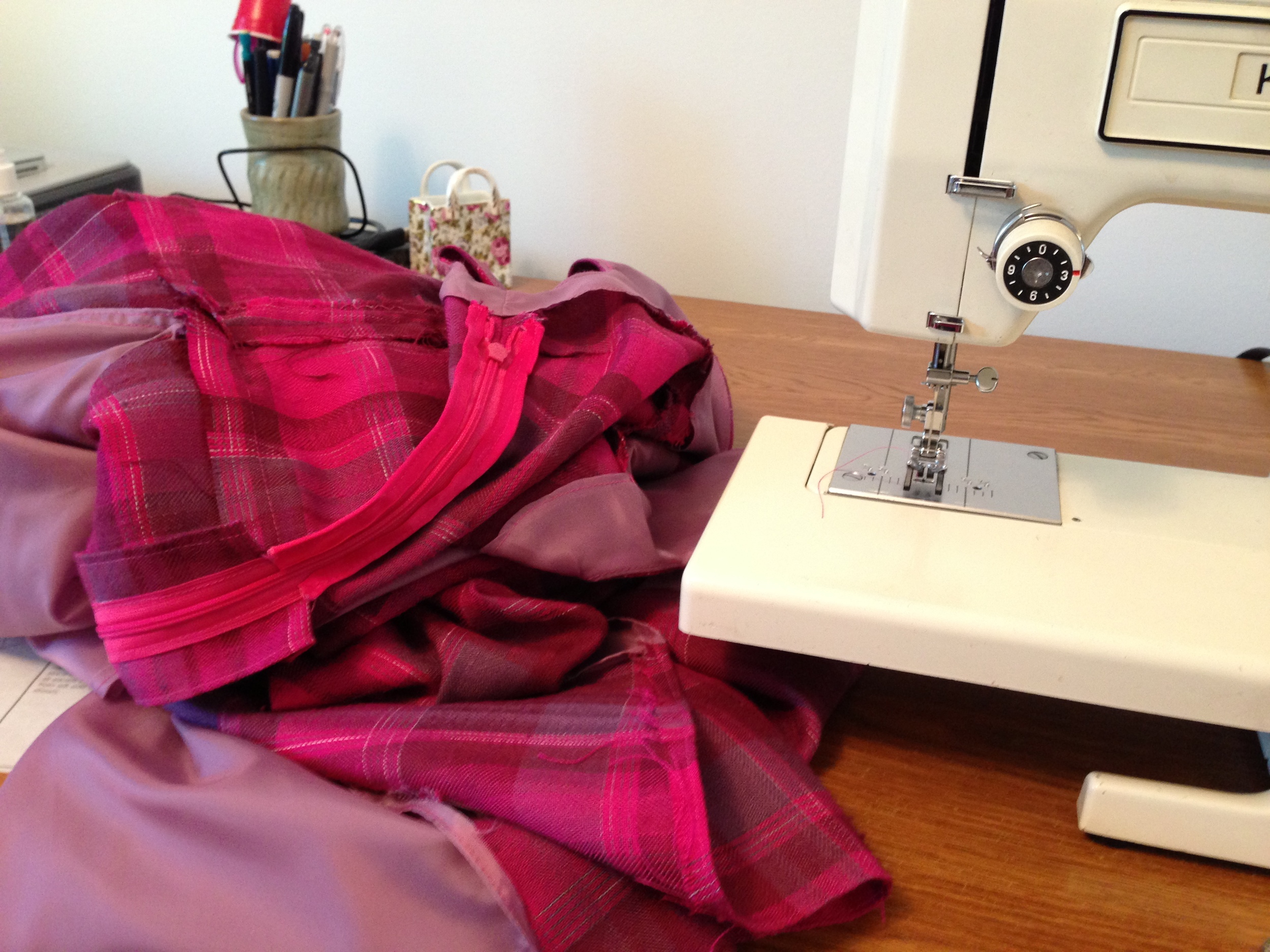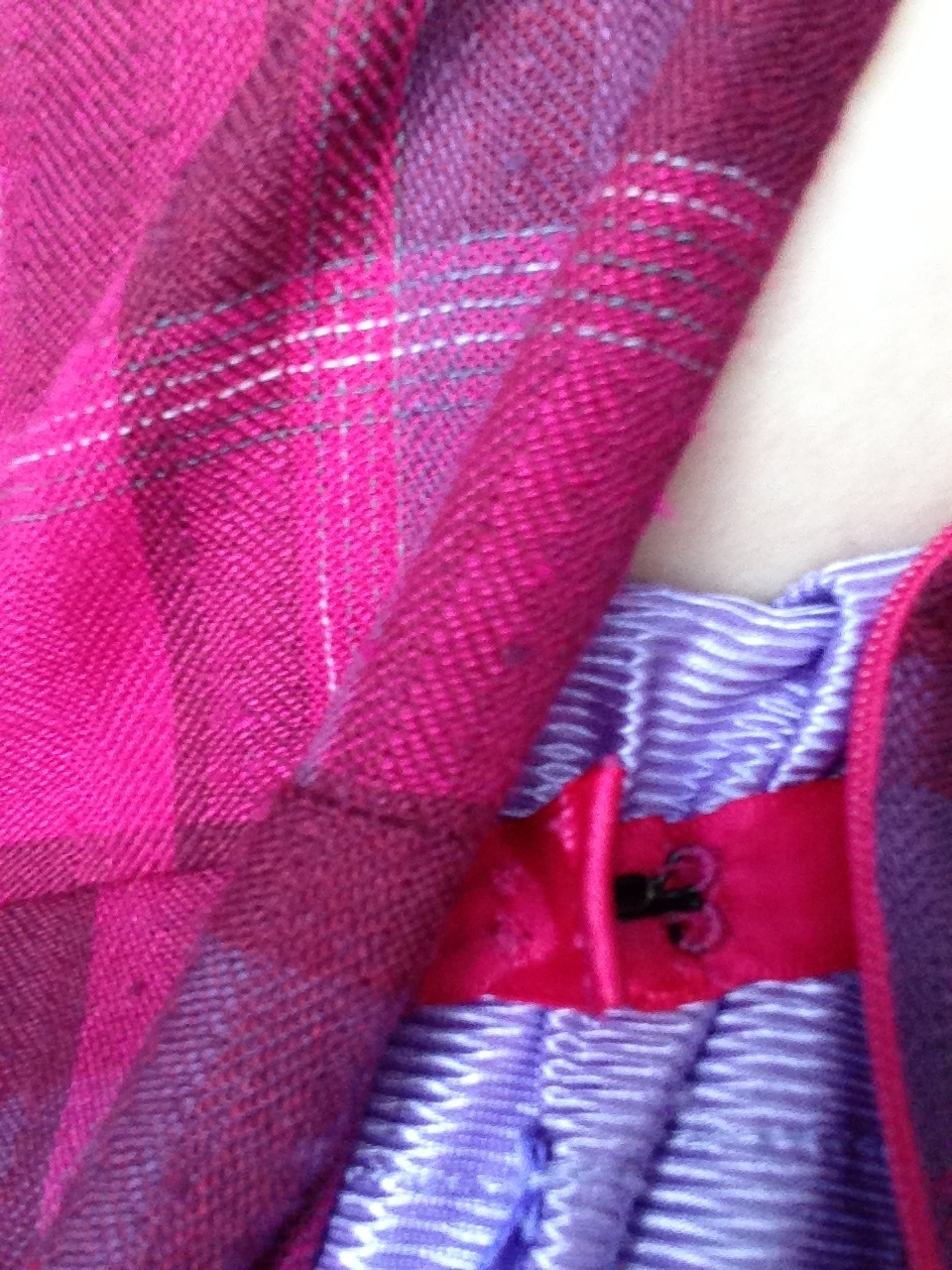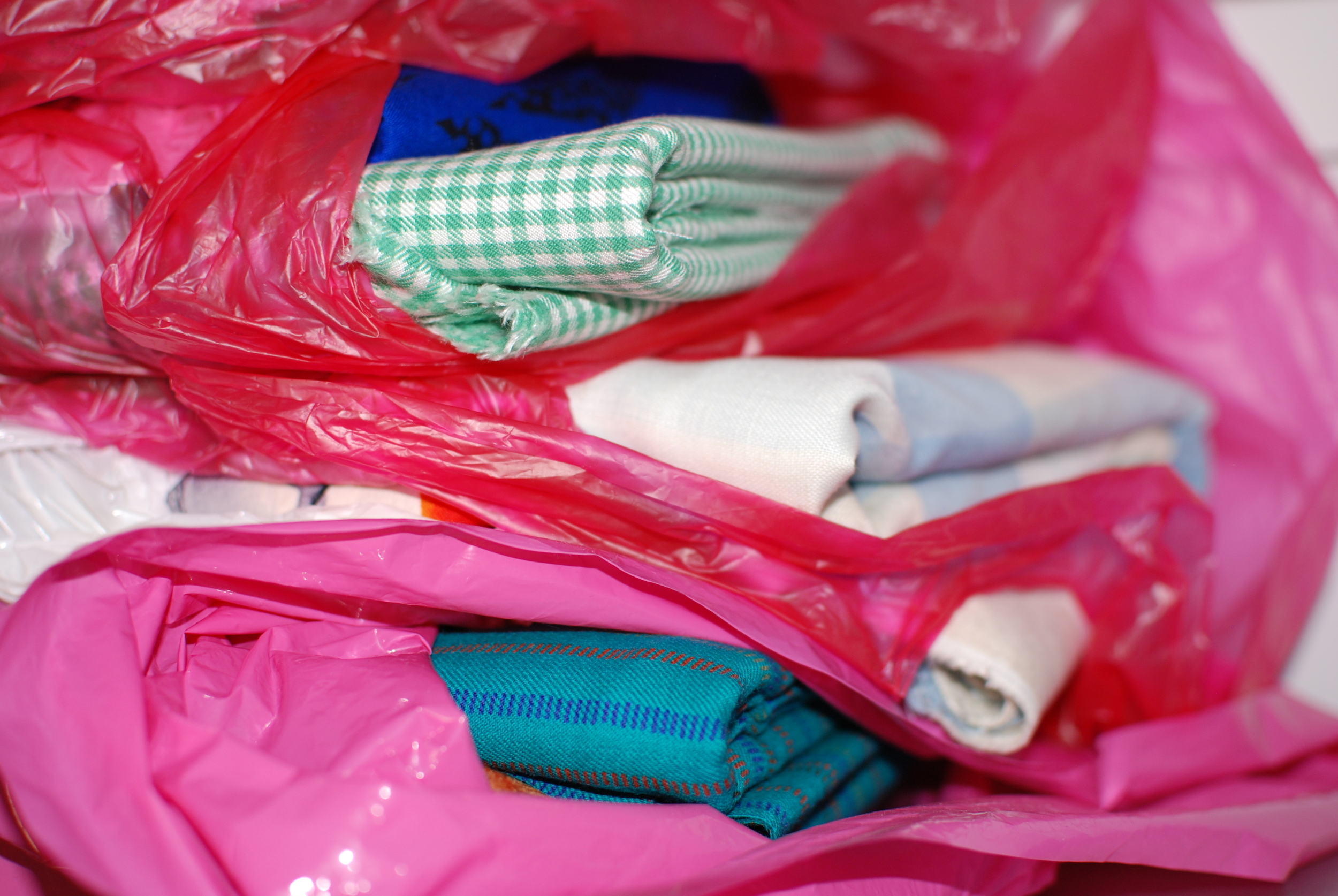As many of you know, I have a rather large(-ish) fabric collection. It's not the biggest that I've seen, of course, but it's modesty is really a big sham. No ifs, ands, or buts about it.
One of the last purchases I ever made at a now closed fabric shop in Edmonton, Estee's, was an absolutely ridiculous knit fabric in browns and yellows. I went with my lovely lady Lesley and she bought a super stretchy deep blue knit. The plan was: Make sweaters together. But this was pre-move, and despite all our good intentions, the projects never got started and the fabric went to live with it's brothers and sisters on a shelf (and later in a giant Rubbermaid bin).




This past winter has been a flurry of activity on the fabric-using front. PJ pants, the green gingham dress, and I thought there was more but apparently not. (Lol.) So! Since it's 'winter', Lesley and I decided to skype sewing date our overly well intentioned sweater plan into action.
I've never dealt with knit fabric before and didn't actually think much of it until my pattern arrived. I bought an original 1971 Simplicity pattern from Out of the Ashes Collectibles on Etsy. It was Exactly what I wanted: 1970s shape with long sleeves and a turtleneck. Perfection. (I defs recommend her shop by the way! Lots of neat patterns and she ships quick!)
The pattern said it was designed exclusively for knits, which got me thinking: What is different about knits that it has a special pattern just for it? Answer: Knitting is stretchy. This little fact about knitting should have been obvious to me, as a knitter, but I totally didn't think about the ramifications that stretch would have on actually sewing something. AKA my brain was like: "Ehhhhh. So?", when it should have been: "Oh shit. I've made a huge mistake."
It turns out that stretch fabric is special much in the same way working with tulle is special: It sucks. Ok ok, I may be over reacting, but let me explain. Different patterns are designed for different stretch fabrics. Some fabrics have almost no stretch whereas others are SUPER stretchy (like 15 cm of stretch). Some fabrics are good at stretching and returning to their original shape afterwards, but mostly stretch fabric gets all deformed and wavey looking. Unless it's crafted properly. Which is, of course, the hard part.


So! I got out my handy Vogue sewing book (formally sewing paperweight), and found an entire section devoted to sewing knit fabrics! 'Great!', I thought. All the information! Sassy brain, book learning is for people with patience! I read all the info about different types of stretch fabric AND how to test your fabric using a Stretch Gauge (pictures!). Most new patterns, it turns out, if they use stretch fabric, have a stretch gauge on the pattern envelope too. So you can test the fabric before you buy. Someone is thinking ahead! (Don't worry, it wasn't me.) It turned out my wild vintage fabric was 'Moderate' stretchy and Almost retained its shape after being stretched. Success! My pattern was for stable and moderate knits. Fluke point Andrea!





Next was cutting out the pattern. This was actually, in my opinion, the hardest part of the whole project. Because I had a prominent Zag going on with the fabric, I'd be trying to match naps (sense of the fabric) for all the pieces I had to cut. This is difficult enough as is, with minimal sewing training, but add in the fact the fabric is stretchy and likes to curve of it's own free will, well, it's a pain in the butt. There was a lot of 'placing' the pattern pieces. Hours of it. In the end, I definitely gave up a teeeeny bit cutting the last dress back piece, which you will see later was a mistake, but one that most people won't notice. Advice for cutting stretchy knits with a nap: lots of sleep, patience and maybe some formal training. XD
Anyways! All cut out! I decided that I really liked the salvage edge of the fabric with it's pink yarn. That was going to be my pre-made hem. So essentially, the dress was 11 seams: Back, 2 sides, 2 shoulders, 2 turtle neck, 2 arms and 2 sleeves. Easy peasy. I marked all my pieces with some green thread, set my lovely chainsaw motor-ed sewing machine to knit setting (slight zigzag and a lighter presser foot pressure) and got to stay-stitching. I usually don't bother with stay-stitching everything.... mostly because of laziness.... But for this project the fancy knit information book AND the pattern itself said to stay-stitch. I'm glad I did. The pieces kept stretching all over the place as a sew-ed.








Marking before sewing, it turns out, is Super important with stretch fabric too. After the stay-stitching, the pieces can get all out of shape. So much so that they may need to be cut and stay-stitched again. This didn't happen to me, thank gad, but I was glad that I had pre-marked all the pieces. Now it was just a case of pinning the pieces together, while matching the markings And that lovely Zag.
All the seams went together super well. (Well, minus my rage-quit dress back piece. The seam was fine but the zag was about an inch off. -cries- Ah well. A belt and no one will notice!) I had even planned for my lovely scalloped pre-made hem to line up and it even worked! -gasps heard from the invisible crowd- All that remained was to finish the seams (and find the stray pins caught in the knitting.... but that's what magnets are for, right?). The sewing book and pattern instructions heavily implied that overcasting the edges was the way to go to finish this dress. I have an overcasting stitch on my sewing machine but I actually wanted to check out one of the work rooms I've seen in downtown Toronto.
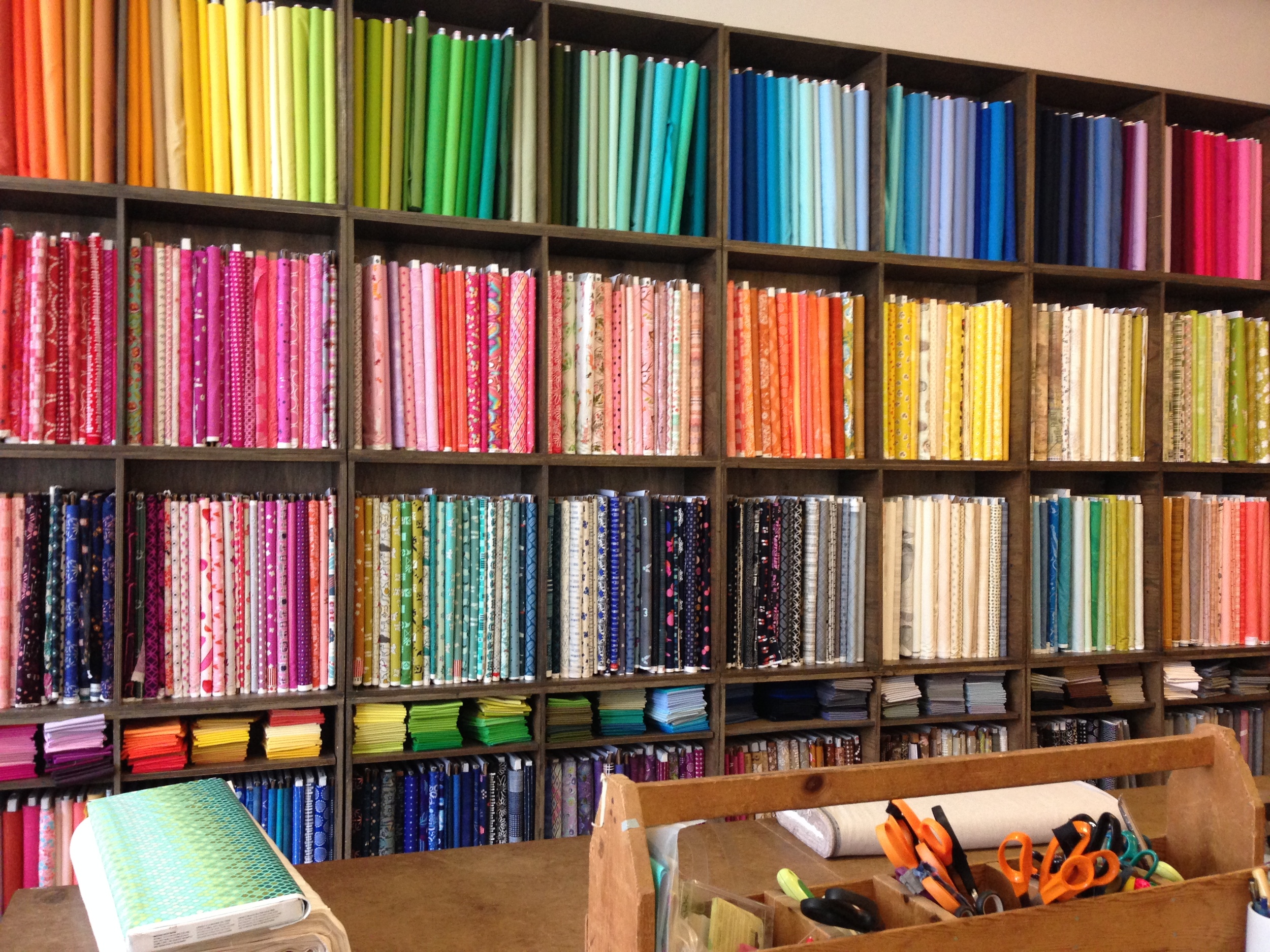
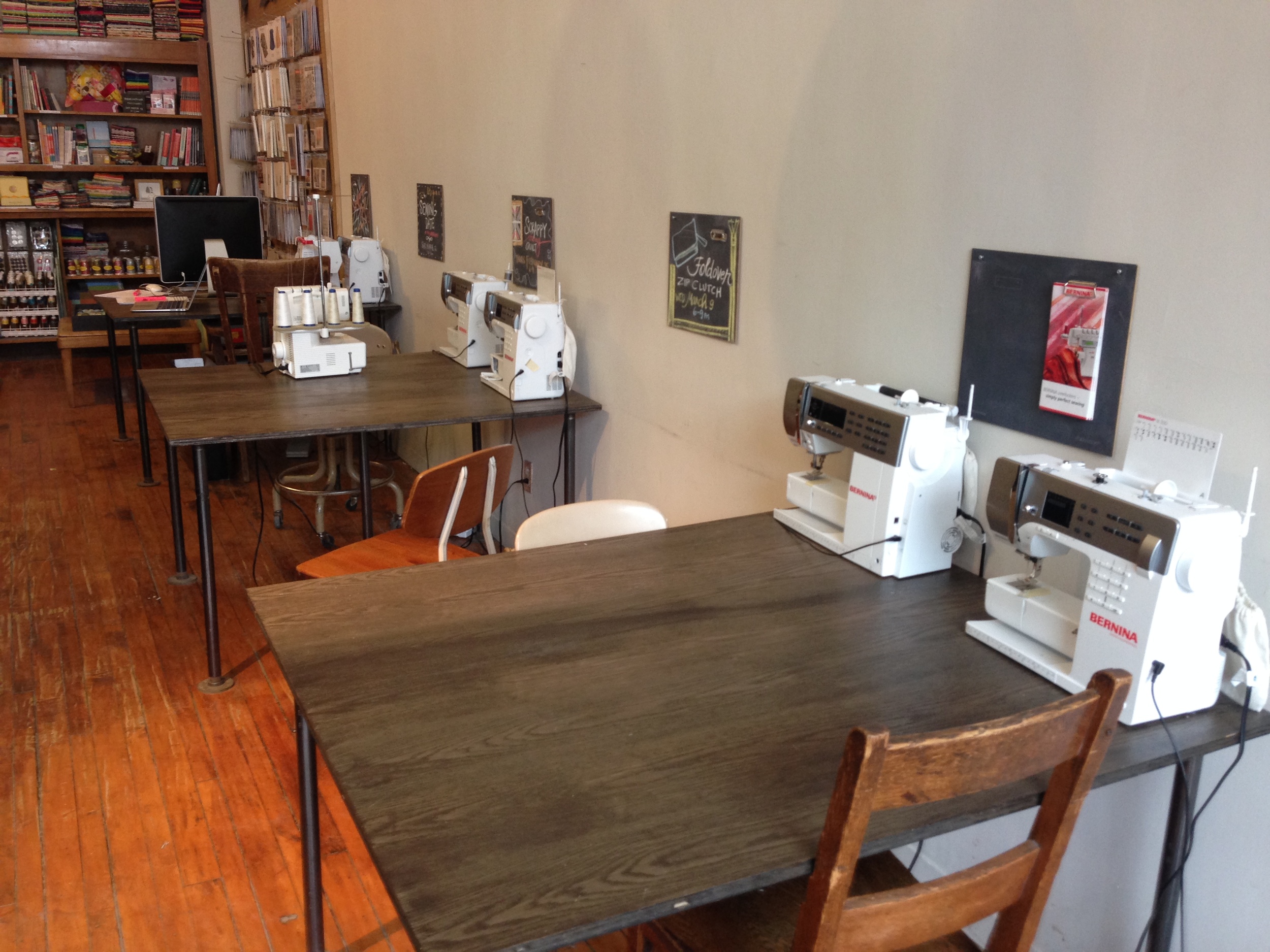
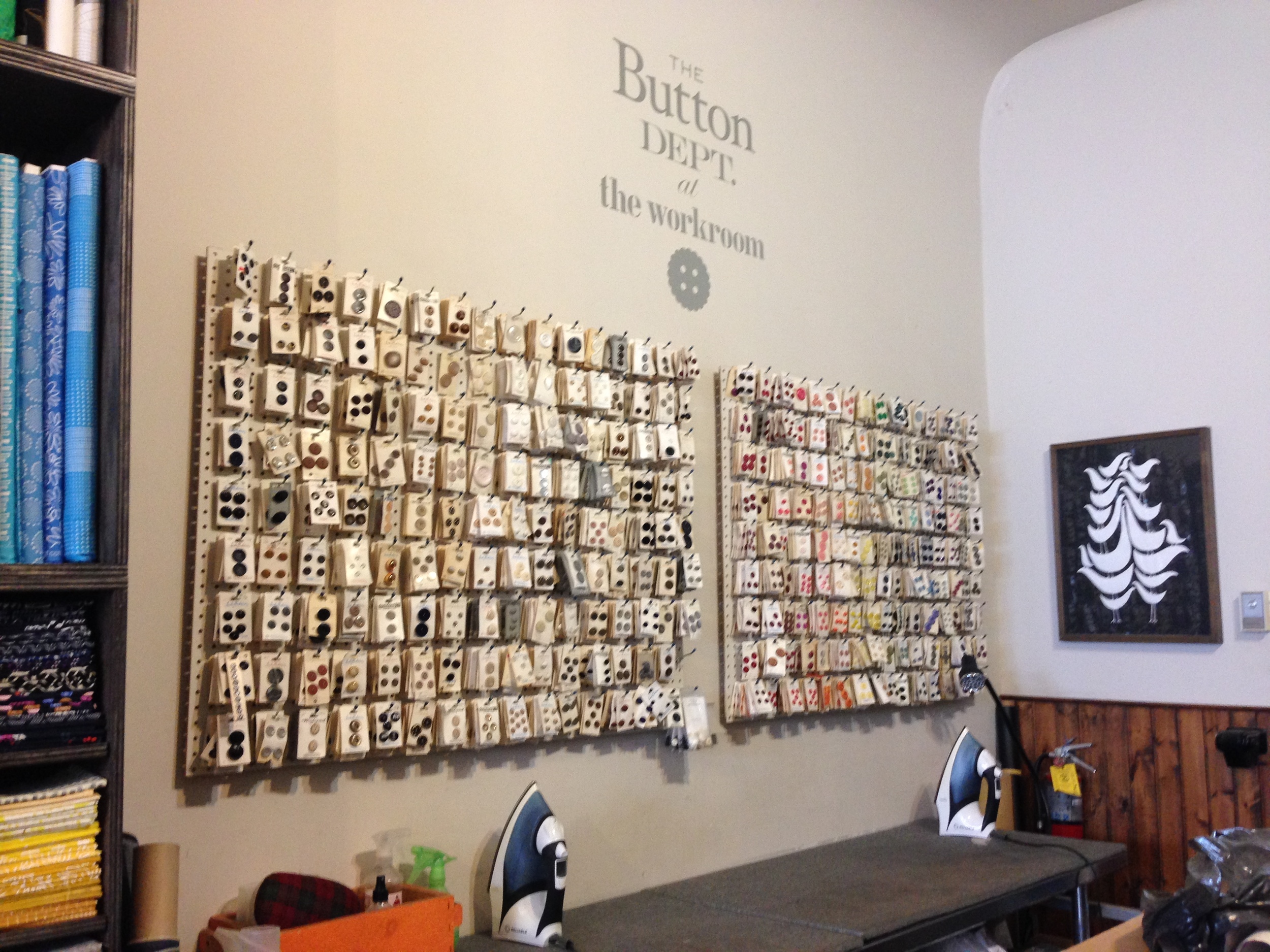

These places seem to me like never-never lands of sewing expertise and fancy quilting and serging machines. There are a bunch of places that offer sewing and quilting classes, or just rented time on a magical machine of your choosing. The place I decided to try was by my friend Heather's place on Queen W. (Heather is the Real seamstress of my friends. She does costume work for TV and Movies in the GTA!) The place is called The Workroom and I highly recommend it if you don't want to have to buy a serger (or just don't want to deal with the hassle of threading and maintaining one, like me). $8/hour of use? Sold. I was super impressed with the storefront too. I have a feeling, based on the fabric selections, that it's more of a quilters heaven than a fashion hub but it still served it's purpose. Edges of 11 seams serged and finished.
Overall, it was a fun project! I got to order a vintage pattern from an adorable Etsy store owner; I got to work with material I've never dealt with before (and probably won't again for a very long time); and I got to adventure to one of the many sewing spaces I've seen around Toronto. And now have a hilariously amazing turtlenecked 1970s sweater dress.
XD
-Andrea
The Half-Assed Hobbyist






